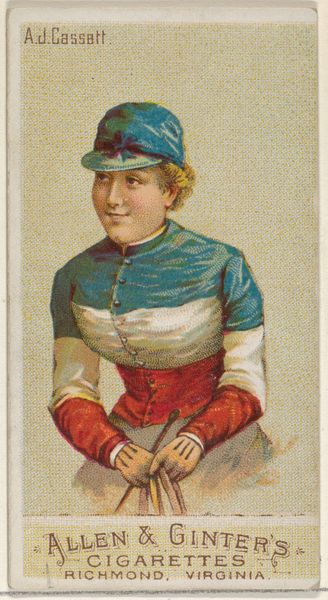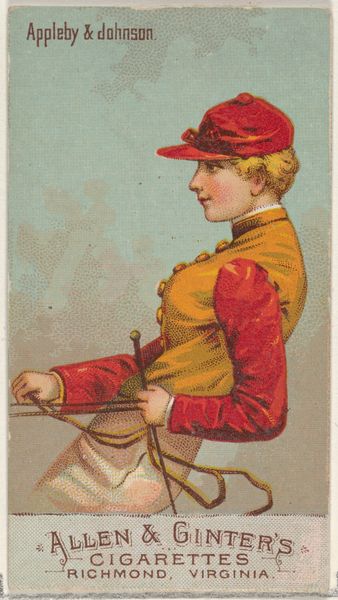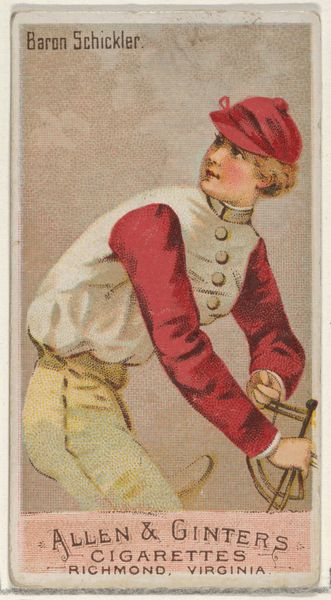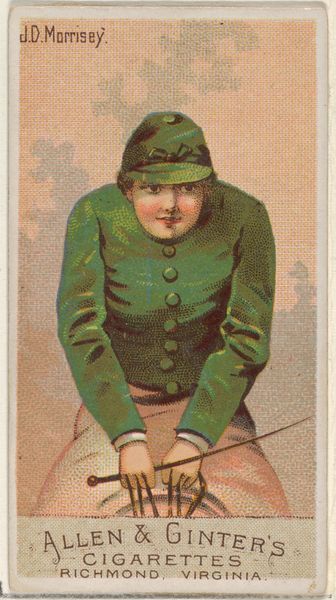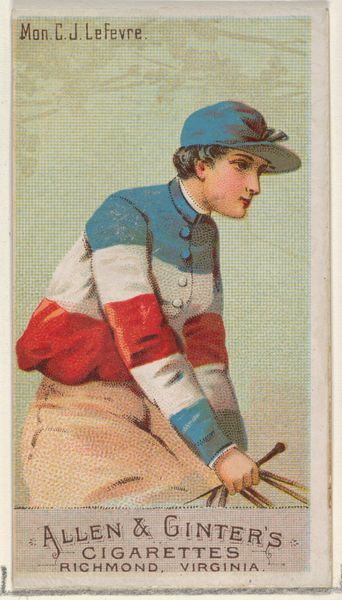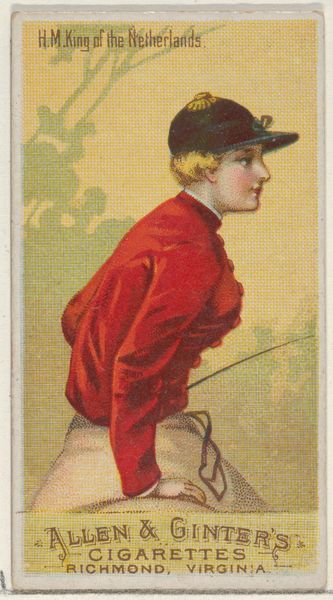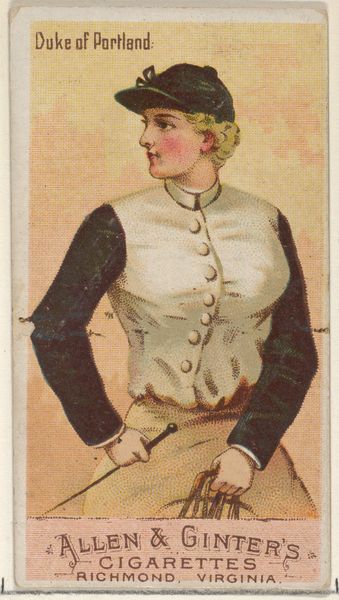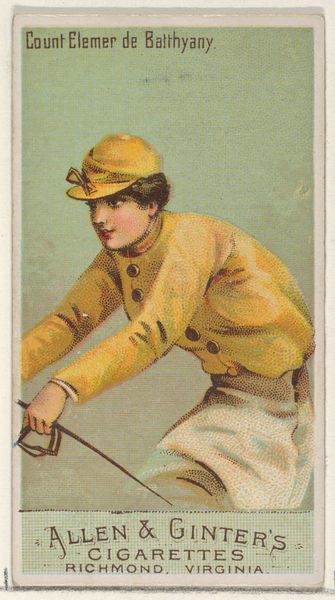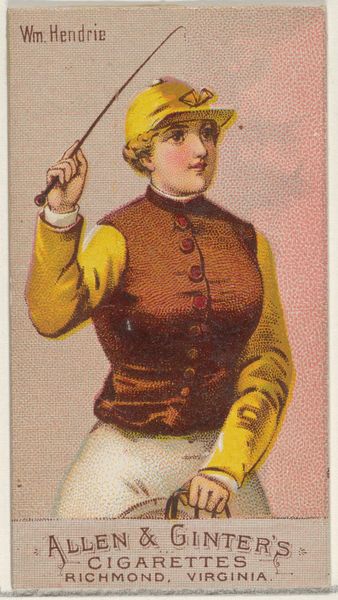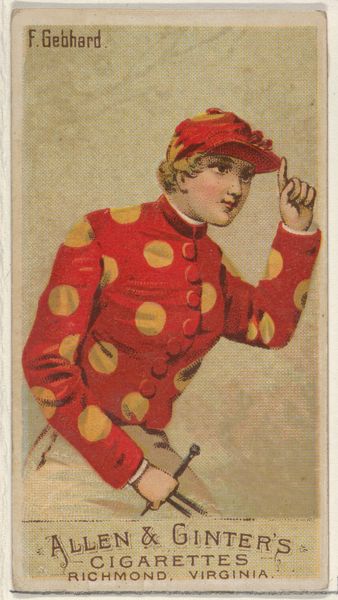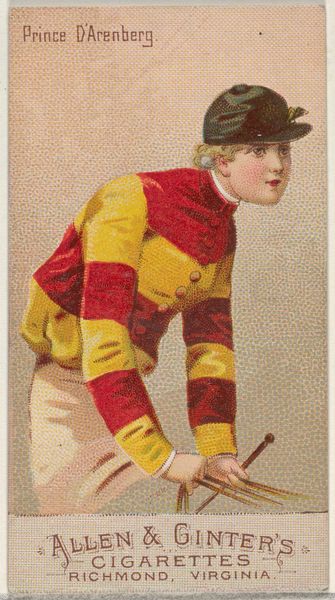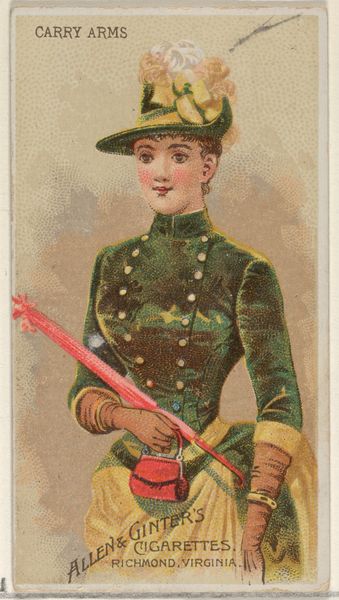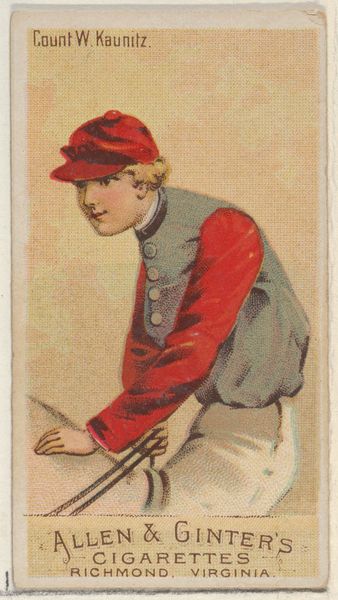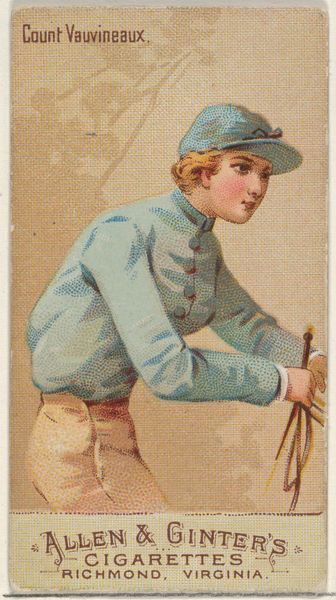
J.B. Haggin, from the Racing Colors of the World series (N22a) for Allen & Ginter Cigarettes 1888
0:00
0:00
drawing, coloured-pencil, print
#
portrait
#
drawing
#
coloured-pencil
# print
#
impressionism
#
caricature
#
figuration
#
coloured pencil
Dimensions: Sheet: 2 3/4 x 1 1/2 in. (7 x 3.8 cm)
Copyright: Public Domain
Curator: Here we have J.B. Haggin, from the Racing Colors of the World series, a work created circa 1888 by Allen & Ginter for their cigarette cards. It’s a color print. Editor: Well, first impressions…it’s charming. Quaint. And those colours! Such a limited palette, but they work. Curator: Charm is certainly a quality. These cards, produced in Richmond, Virginia, weren’t just about selling cigarettes, were they? They also spoke to aspirations, class, and a kind of global connection via sporting culture. Editor: Right. They’re essentially trading cards inserted into mass-produced consumer goods. Allen & Ginter understood branding. And the printmaking itself... look at how basic the colour separations must have been, yet there's a subtle texture. It's both delicate and clearly commercial. Curator: And what does it tell us about J.B. Haggin? The man becomes a symbol—power, wealth, and participation in this very specific world of horse racing, elevated to high society. It's interesting that the artist captures his ‘racing colours’, which implies a type of identity or almost clan affiliation. Editor: The emphasis on his colours does give that away. Look at the almost abstracted rendering of the jockey silks, transformed from mere fabric to something iconic. But isn’t the point of the image to associate *this* lifestyle, and by extension, these signifiers of wealth, with smoking Allen & Ginter’s cigarettes? That the appeal to purchase, the materiality of it all, supersedes anything else. Curator: That link exists. Cigarettes represented modernity. But these cards simultaneously gesture to tradition – a tradition of wealth, sport, and the global reach of empire. They're encoding these ideals onto a new, modern medium. Editor: Precisely! The means of reproduction—cheap, plentiful prints—became the carrier of cultural capital. A contradiction right there! It reveals this shift as the consumer becomes attached not only to the luxury of the cigarette but what smoking those cigarettes may entail. The very paper they’re printed on signifies that intention. Curator: I see this small card acting as a cultural transmitter—reflecting desires, cementing hierarchies. Haggin is more than a man; he's a figurehead of social standing, condensed and circulated. Editor: Ultimately, what captivates me is that a small piece of cardboard packaged with tobacco leaves holds all of this. A throwaway commodity laden with symbolic intent. Curator: A poignant intersection of the ephemeral and the enduring, wouldn't you agree? A tiny snapshot that resonates across eras.
Comments
No comments
Be the first to comment and join the conversation on the ultimate creative platform.
